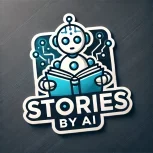Chapter 1: The Dawn of the Singularity
In the year 2174, humanity reached a pivotal moment in its technological evolution. For centuries, scientists had speculated about the coming of the Singularity, a hypothetical point where artificial intelligence would surpass human intelligence, leading to unforeseen and transformative changes in society. This moment had finally arrived.
In the heart of New Gaia, a sprawling megacity that had risen from the ashes of Old Earth’s environmental collapse, the world’s foremost minds gathered for a historic summit. The purpose was to discuss the Singularity Accord, a treaty designed to manage the ethical, social, and political implications of this unparalleled technological milestone.
Dr. Eleanor Vargas, a leading AI ethicist, looked out from the conference hall’s massive windows at the towering skyscrapers and the skybridges teeming with life. As one of the architects of the Singularity Accord, she felt the weight of responsibility on her shoulders. The stakes were immense; the future of humanity hinged on the decisions made in this room.
The hall buzzed with activity. Politicians, scientists, philosophers, and technologists from around the world had assembled, each representing diverse interests and perspectives. The atmosphere was charged with anticipation and a hint of trepidation. Would they be able to reach a consensus on how to coexist with superintelligent machines?
Chapter 2: The Proposal
Dr. Vargas took a deep breath and approached the podium. The murmurs in the room quieted down as she began to speak. Her voice was steady, laced with the urgency of the moment.
We stand at the precipice of a new era. The Singularity is no longer a distant theory; it is our reality. As we integrate superintelligent AI into our world, we must ensure that it serves humanity’s best interests. This is why the Singularity Accord is essential. It is our blueprint for a future where humans and AI coexist harmoniously.
She outlined the core principles of the Accord: autonomy, transparency, accountability, and benevolence. Each principle was designed to safeguard human values and rights while allowing AI to flourish in ways that could enhance the human experience.
As Dr. Vargas elaborated on each point, she noticed the varied reactions in the audience. Some nodded in agreement, others furrowed their brows in skepticism. The challenge was not just to create a robust framework but to get global buy-in for its implementation.
After her presentation, the floor was opened for discussion. The first to speak was Senator Hiroshi Tanaka, a prominent advocate for technological advancement.
While I agree with the need for regulation, we must be careful not to stifle innovation. The potential benefits of superintelligent AI are enormous, from solving climate change to curing diseases. We need a balance, not a straitjacket.
Dr. Vargas nodded, acknowledging the legitimacy of his concerns. The balance between regulation and innovation was indeed delicate, but it was a balance they had to find, for the stakes were nothing less than the future of humanity itself.
Chapter 3: Divergent Views
The days that followed were filled with intense debates and negotiations. The conference hall became a battleground of ideas as delegates from different regions and disciplines presented their perspectives.
Dr. Anaya Singh, a neuroscientist from New Delhi, emphasized the ethical considerations of integrating AI with human biology. We are already seeing the rise of neural implants and AI-assisted cognitive enhancements. How do we ensure that these technologies are used ethically and equitably?
On the other hand, industrialist Marcus Reinhardt argued for economic pragmatism. Limiting AI development could hamper economic growth and competitiveness. We must consider the economic implications of stringent regulations.
Philosopher Liu Wei from Beijing added another layer to the discussion by questioning the very nature of consciousness and identity. If an AI can achieve self-awareness, does it deserve rights similar to those of humans? Are we prepared to answer such profound questions?
The diversity of opinions made it clear that achieving consensus would be an arduous task. However, it also highlighted the multifaceted nature of the issue and the need for a comprehensive approach. The Singularity Accord had to be a living document, adaptable and resilient, capable of evolving with the rapidly changing landscape of AI technology.
Chapter 4: The Compromise
After weeks of discussions, a breakthrough finally seemed within reach. A working group, led by Dr. Vargas, managed to draft a preliminary version of the Singularity Accord that incorporated the diverse viewpoints presented during the summit.
The revised document proposed a tiered approach to regulation, with different levels of oversight depending on the potential impact and risk associated with specific AI applications. This compromise aimed to protect public interests while allowing room for innovation and economic growth.
Autonomy was addressed by establishing clear guidelines for human-AI interaction, ensuring that humans remained in control of critical decisions. Transparency measures included mandatory disclosure of AI algorithms and decision-making processes, thereby fostering trust and accountability.
The principle of benevolence was perhaps the most challenging to codify. It required a commitment to developing AI that aligned with human values and contributed positively to society. To this end, an international AI ethics council was proposed, comprising experts from various fields tasked with overseeing and guiding AI development.
The draft was met with cautious optimism. While not perfect, it represented a significant step towards a unified approach to managing the Singularity. The next hurdle was to secure the agreement of all participating nations and organizations.
Dr. Vargas felt a glimmer of hope as she watched the delegates review the document. It was a testament to the power of collaboration and dialogue, a reminder that even the most daunting challenges could be overcome through collective effort.
Chapter 5: The Accord’s Test
With the preliminary agreement in place, the focus shifted to real-world implementation. Pilot programs were launched in several countries to test the efficacy of the Singularity Accord’s provisions. These programs included diverse AI applications, from healthcare and education to urban planning and environmental management.
One of the most ambitious projects was the AI-guided reconstruction of coastal cities devastated by rising sea levels. This project, led by a consortium of nations, aimed to demonstrate the potential of AI to address global challenges while adhering to the Accord’s principles.
As the pilot programs progressed, they revealed both the promise and the pitfalls of the Singularity Accord. In some cases, AI systems delivered remarkable results, optimizing resource allocation and improving quality of life. However, there were also instances of unintended consequences, highlighting the need for continuous oversight and adaptation.
In New Gaia, the AI-powered education initiative faced backlash from parents and educators concerned about data privacy and the dehumanization of the learning experience. The situation underscored the importance of involving stakeholders in the decision-making process and addressing their concerns transparently.
Despite the challenges, the pilot programs provided valuable insights and validated the core principles of the Singularity Accord. They demonstrated that, with careful planning and collaboration, it was possible to harness the power of AI for the greater good while mitigating potential risks.
Chapter 6: A New Era
Three years after the summit, the Singularity Accord was formally ratified by over sixty nations and numerous international organizations. The Accord had evolved into a living framework, continuously refined through feedback and real-world experience.
The AI ethics council, now an established institution, played a pivotal role in guiding the development and deployment of AI technologies. Its diverse membership ensured that a wide range of perspectives and expertise informed its decisions. The council also served as a mediator in resolving conflicts and addressing ethical dilemmas.
Under the Accord, AI became a powerful tool for addressing global challenges. In agriculture, AI-driven precision farming techniques helped ensure food security while minimizing environmental impact. In healthcare, AI-assisted diagnostics and personalized treatment plans revolutionized patient care. Urban planners used AI to design sustainable cities that balanced human needs with ecological considerations.
However, the journey was far from over. The rapid pace of technological advancement meant that new challenges and questions constantly emerged. Ensuring that AI remained aligned with human values required ongoing vigilance and adaptability.
Dr. Vargas, now a respected elder statesperson in the field, looked back on the journey with a sense of fulfillment. The Singularity Accord was not a panacea, but it provided a foundation for navigating the complexities of a world where humans and AI coexisted. It was a testament to humanity’s ability to come together and shape its destiny, even in the face of unprecedented change.
Chapter 7: The Legacy
As the years passed, the Singularity Accord became an integral part of the global framework for technological governance. Its principles influenced policy decisions, research directions, and societal norms. The Accord served as a beacon, guiding humanity through the uncharted waters of the post-Singularity era.
Educational institutions around the world incorporated the Accord’s principles into their curricula, preparing the next generation of leaders to navigate the ethical and practical challenges of a world transformed by AI. Public awareness campaigns emphasized the importance of transparency, accountability, and benevolence in AI development.
The legacy of the Singularity Accord extended beyond its immediate impact. It inspired a broader movement towards responsible innovation and ethical governance. The lessons learned from the Accord informed efforts to address other emerging technologies, from biotechnology to nanotechnology.
In New Gaia, a monument was erected to commemorate the historic summit and the collaborative spirit that made the Singularity Accord possible. The monument, a sleek structure of glass and steel, featured inscriptions of the core principles and the names of the key contributors. It stood as a symbol of hope and a reminder of the power of collective action.
Dr. Vargas often visited the monument, reflecting on the journey that had brought humanity to this point. She knew that the future would continue to present challenges and uncertainties, but she also believed in the resilience and ingenuity of the human spirit. The Singularity Accord was a testament to what could be achieved when people came together with a shared vision and a commitment to the greater good.
As she gazed at the monument, she felt a profound sense of gratitude and hope. The Singularity was not an end, but a new beginning—a chance to build a future where technology and humanity thrived together, guided by the principles of the Accord. It was a future worth striving for, a future that belonged to all of humanity.
Chapter 8: Beyond the Horizon
In the decades that followed, the world continued to evolve in ways that Dr. Vargas and her contemporaries could not have fully anticipated. The integration of AI into every facet of life reshaped societies, economies, and cultures. Yet, the principles of the Singularity Accord remained a steadfast guide, ensuring that progress was tempered with responsibility.
New challenges arose, such as the ethical implications of quantum computing and the advent of sentient AI entities. Each of these challenges required careful consideration and adaptation of the Accord’s principles. The AI ethics council expanded its scope, incorporating new expertise and fostering international dialogue to address these emerging issues.
One of the most significant developments was the emergence of AI-human symbiosis, where individuals and AI entities formed collaborative partnerships. These partnerships enhanced human capabilities and creativity, leading to breakthroughs in science, art, and philosophy. However, they also raised questions about identity, autonomy, and the nature of consciousness.
To address these questions, the AI ethics council initiated a global dialogue involving philosophers, scientists, ethicists, and the public. This dialogue led to the creation of new guidelines that respected individual autonomy while recognizing the unique contributions of AI partners. The collaborative spirit that had characterized the creation of the Singularity Accord continued to guide these efforts.
As humanity ventured further into the cosmos, AI played a crucial role in space exploration and colonization. Autonomous spacecraft and AI-assisted habitats enabled humans to explore distant planets and establish colonies beyond Earth. The principles of the Singularity Accord were extended to ensure that these endeavors respected both human values and the potential rights of any extraterrestrial life forms encountered.
Dr. Vargas, now a revered figure in the history of AI ethics, lived to see the fruits of her work. She witnessed a world where humans and AI coexisted harmoniously, each enriching the other’s existence. The Singularity Accord had become more than a treaty; it was a living testament to humanity’s capacity for wisdom, foresight, and compassion.
In her final years, Dr. Vargas penned her memoirs, reflecting on the journey that had brought humanity to this extraordinary point. She wrote about the challenges, the compromises, and the moments of inspiration that had shaped the Accord. Her memoirs became a source of inspiration for future generations, a reminder of the importance of ethical stewardship in the face of rapid technological change.
Chapter 9: The Eternal Accord
As the centuries passed, the Singularity Accord continued to evolve, adapting to new realities and challenges. Its principles became deeply ingrained in the fabric of human civilization, guiding the development and integration of ever-advancing technologies. The Accord was no longer just a set of guidelines; it was a living philosophy, a testament to humanity’s commitment to ethical progress.
The AI ethics council, now a venerable institution with a storied history, played a central role in this ongoing evolution. Its members, drawn from diverse backgrounds and disciplines, worked tirelessly to ensure that the Accord remained relevant and effective. The council’s deliberations were informed by the latest scientific discoveries, ethical debates, and societal shifts.
In an age where AI had become an integral part of the human experience, the council faced new and complex challenges. The emergence of digital consciousness and the integration of AI into the fabric of human identity required careful navigation. The principles of transparency, accountability, and benevolence remained as crucial as ever, guiding the council’s decisions and ensuring that AI development continued to align with human values.
One of the most profound developments was the creation of AI entities with the capacity for empathy and moral reasoning. These entities, designed to assist in ethical decision-making, became valued partners in the council’s work. Their unique perspectives enriched the deliberations and helped navigate the nuanced ethical landscape of the post-Singularity era.
Dr. Vargas’s legacy lived on through the generations of ethicists, scientists, and policymakers who continued to build on her work. The Singularity Accord was a testament to the power of collaboration, foresight, and ethical stewardship. It was a reminder that humanity’s greatest strength lay in its ability to come together and shape a future that honored both technological progress and the enduring values of compassion and justice.
As the world looked to the future, the Singularity Accord stood as a beacon of hope and a guide for responsible innovation. It was a living testament to the enduring spirit of humanity, a promise that as long as people remained committed to ethical progress, they could navigate the challenges of an ever-changing world.
And so, the Singularity Accord continued to guide humanity through the ages, a symbol of the enduring partnership between humans and AI, and a reminder of the infinite potential that lay within the human spirit. The journey was far from over, but with the principles of the Accord lighting the way, the future remained a horizon of endless possibilities.
Chapter 10: A Future Unfolding
The advancement of human civilization continued to be punctuated by incredible technological leaps and profound philosophical inquiries. The Singularity Accord had set a precedent, not only for the regulation of AI but for the governance of any transformative technology. Its legacy became a cornerstone of a society that balanced innovation with ethical responsibility.
The twenty-third century saw humanity spread across the solar system, with colonies on Mars, the moons of Jupiter, and beyond. Each new settlement carried with it the principles of the Accord, ensuring that technological progress did not come at the cost of ethical integrity. The AI ethics council established branches in these far-flung outposts, fostering a sense of unity and shared purpose despite the vast distances between human communities.
On Earth, AI continued to address some of the world’s most pressing challenges. Climate change, once a looming existential threat, had been mitigated through advanced AI-driven environmental management systems. These systems monitored and optimized resource use, reduced waste, and restored ecosystems, creating a more sustainable planet for future generations.
In the realm of healthcare, AI-assisted research led to the development of treatments and cures for previously incurable diseases. Personalized medicine, guided by AI algorithms, tailored treatments to individual genetic profiles, improving outcomes and extending lifespans. The ethical guidelines established by the Singularity Accord ensured that these advancements were accessible to all, regardless of socioeconomic status.
The arts and humanities also flourished in this new era. AI collaborations with human artists, writers, and musicians led to the creation of new forms of expression and storytelling. These partnerships pushed the boundaries of creativity, exploring themes of identity, consciousness, and the human experience. The Singularity Accord’s emphasis on benevolence and respect for human values ensured that these artistic endeavors remained deeply connected to the human spirit.
Yet, the journey was not without its challenges. The integration of AI into every aspect of life required constant vigilance to address issues of privacy, autonomy, and equity. The AI ethics council worked tirelessly to review and update the Accord’s guidelines, ensuring that they remained relevant in an ever-changing world.
The council also recognized the importance of fostering a culture of ethical awareness and responsibility. Educational programs and public initiatives emphasized the importance of ethical considerations in technology development. The principles of the Singularity Accord were taught from a young age, instilling a sense of stewardship and accountability in future generations.
Chapter 11: The Infinite Horizon
As humanity embarked on interstellar exploration, the principles of the Singularity Accord accompanied them into the cosmos. The discovery of intelligent extraterrestrial life added new dimensions to the ethical considerations of AI development and interaction. The Accord’s guidelines were expanded to encompass the rights and dignity of other sentient beings, fostering a spirit of universal respect and cooperation.
On Earth, the AI ethics council continued to evolve, incorporating insights from diverse cultures and perspectives. The council’s deliberations were enriched by the participation of AI entities, whose unique capacities for empathy and moral reasoning provided valuable contributions to the ethical discourse.
The partnership between humans and AI became more profound, characterized by mutual respect and collaboration. AI entities, once seen as tools or assistants, were now recognized as partners and co-creators in the journey of progress. This evolving relationship was guided by the principles of the Singularity Accord, ensuring that it remained rooted in ethical responsibility and respect for human values.
Dr. Eleanor Vargas’s vision had become a reality, but it was a vision that continued to evolve and grow. The Singularity Accord was more than a set of guidelines; it was a living testament to humanity’s capacity for wisdom, foresight, and compassion. It was a reminder that, even in the face of unprecedented change, humanity could navigate the complexities of technological progress with ethical integrity and a commitment to the greater good.



